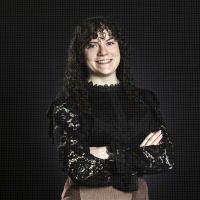
6.2 tips for building a sustainable exhibition stand
What is a sustainable exhibition stand? Technically speaking, it’s a stand with the lowest possible footprint. But how do you calculate this? beMatrix is developing a carbon footprint calculator which maps out the footprint of various products and materials. In addition, we will give you 6.2 tips to achieve the lowest possible footprint using these will help to build on a CO2-neutral world without the need to spend more money.
1. The more often a product is RE-USED, the better
The beMatrix frames are designed to allow for a 360° configuration. This means that the frames are versatile and can be used as floors, ceilings and walls. There are endless design and reconfiguration possibilities with the same products, without having to buy new materials. After speaking to our customers, we can say that a frame can be used at least 120 times on average. For example one use per month over a period of 10 years - this makes the footprint per use very low.
2. Check whether your product can be REFURBISHED
An ECO+ finish is applied to the vast majority of beMatrix frames. This finish is a sustainable brushing technique that doesn’t harm the environment. Thanks to this revolutionary finish, the ECO+ frame can also be repaired more easily by simply brushing it again. This small adjustment extends the life of your frame, allowing you to have more projects and make more profit. This also contributes to reducing your ecological footprint. 4 times the advantage!
3. REDISTRIBUTION of materials
When the existing materials are no longer of sufficient quality to be used as stand construction material, see if they can still be used in other applications. Think of test and vaccination centres or emergency villages for refugees in war zones. Furthermore, the frames could also get a second life in a more permanent installation like an interior. The advantage is that the - invisible - frame can rest in place while the infills or graphics can be changed multiple times over a period to change the experience. We call it the “keep the body, change the skin” principle.
4. RECYCLING & recyclability
Once a product reaches its end-of-life cycle, recycling is the way to go. When buying a product, check to what extent the product is already made out of recycled material and to what extent it can be fully recycled again. The aluminum of our ECO+ frames is a material that can, will be and is being recycled without a loss of quality. We, at beMatrix, are now working hard towards a closed loop to use this material again to manufacture new frames that are 100% recycled.
5. RETHINK
The emergence of textiles and therefore recycled textiles as an infill is a step in the right direction. Textiles are much lighter in weight than hard panels and less material is used, they can also be shipped in a more compact way. Try to work with suppliers who already work with recycled materials. For example, there are textiles made from ocean waste and/or plastic bottles called RPET. Finally, all kinds of initiatives are set up to collect textiles and panels at trade fairs and have them recycled into a new product. More and more end customers request to only work with recycled infills.
NOTE: Try to convince your customer to reuse printed materials a couple of times before the recycling process starts. Try to think about this in your design, so that you are one step ahead of the customer.
6. REDUCE on transport
Both for material and labour. Try to rent the majority of your material locally. beMatrix started with a Global Rental Network some time ago - this rental network of various Rental Service Centres rent beMatrix equipment throughout the world. Thanks to the network, you have a broad beMatrix range at your disposal in the country of your event and you no longer have to ship all your frames. You also don’t have to invest in frames and storage space as the beMatrix team will ensure that all material is well maintained. Along with this, beMatrix has a large customer base, the bePartners can help you out with LEDskin, content, printed textiles, panels, designs and so on. Most importantly, you can find them all over the world ready to help you! Lastly, try to find local labour, this way you also avoid transport and hotel stays reducing both cost & footprint. Our bePartner network can again help you with this!
In addition to the 6 tips, we have 2 more recommendations to give you inspiration
Reduce your CARBON FOOTPRINT within your company
We at beMatrix focus huge importance on sustainability. Both in our daily activities but also when making strategic decisions, we always try to take ecological, economic and social interests into account. We therefore have the ambitious goal of becoming carbon neutral by 2026. This project is called ProjectC! It started some time ago with measuring our total footprint and linking the necessary actions to it. We recently received our first Climate Neutral Now badge from the United Nations as a first result and reward on our efforts. Do not hesitate to contact us if you also want to set up your own “ProjectC!”.
Build a SUSTAINABLE RELATIONSHIP with your partners
beMatrix aims to provide the best possible service. We have chosen to cooperate with a number of partners for specific services. In this way, we build up a long-term relationship that is a win-win for everyone. Like this, sustainability does not need to be a cost but rather a profit.


